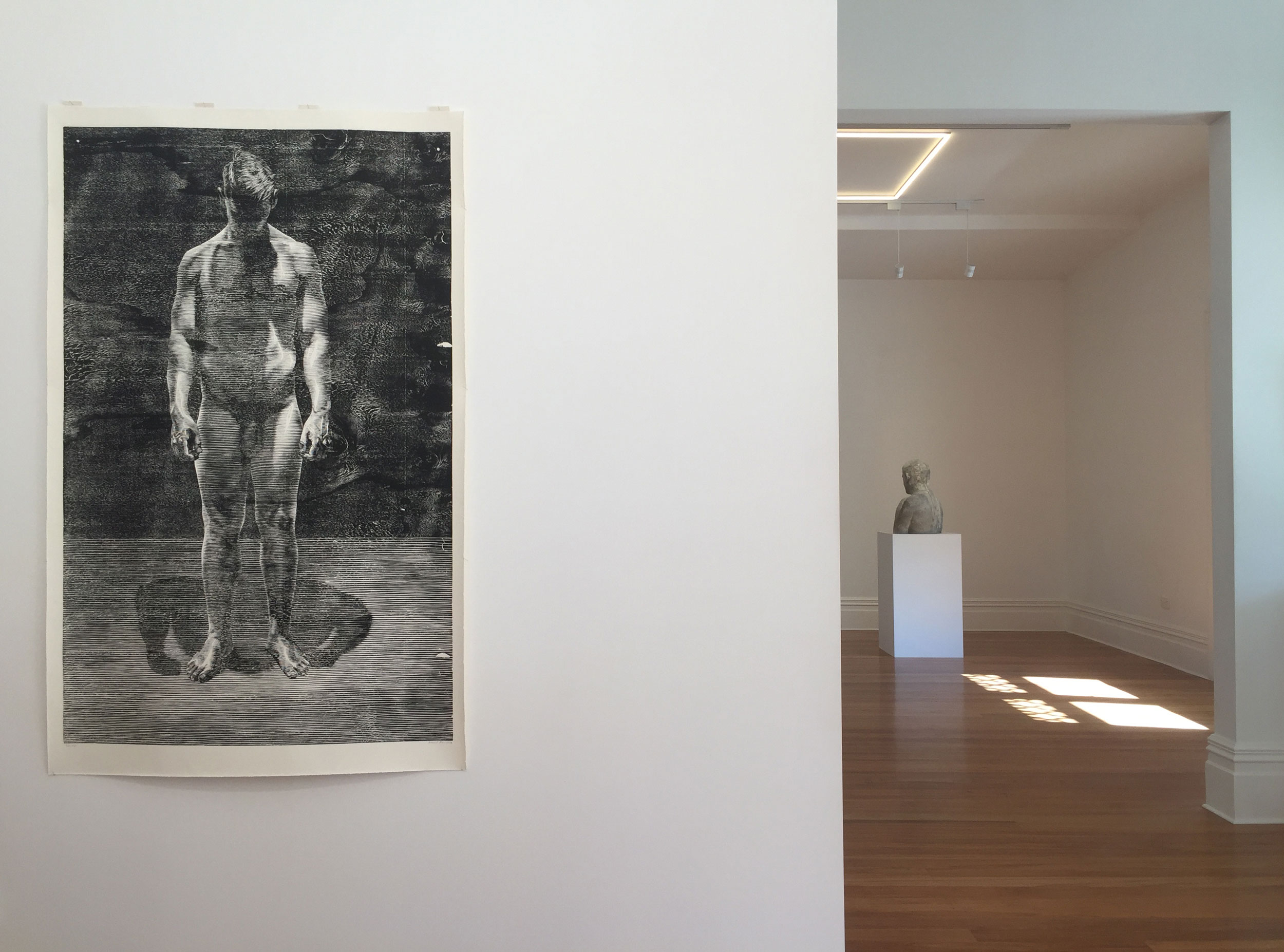Sculptures and woodcuts
PG gallery192 - 2016
Brutalised walls of cast concrete are essential features of any modern city. Skylines around the world are defined by concrete's upward reach. A staggering 330,000 cubic metres was used in just one building - the Burj Khalifa tower built in Dubai in 2009. Modern engineering developments have seen concrete evolve ambitiously into dams, canals and tunnels. This stone and cement compound forms a tough and resilient material. Nearly two thousand years after it was first built, the Pantheon (118-128AD) still has the largest reinforced coffered concrete dome.
Christchurch artist Sam Harrison's intimate sculptures contrast with concrete's use as a building material. Harrison is known for his striking representations of the nude figure through sculpture, drawing and woodblock printmaking. His 2016 exhibition at PG gallery192 has work throughout the gallery spaces. Upon entering the main gallery Harrison presents us with five concrete creations. Initially sculpted in plaster they are his version of the bust. Each figure is cropped just below the chest and planted comfortably on a bespoke plinth.
There is more to concrete than one might expect. Typical of Harrison's treatment of any medium, he has found beauty and subtlety by respecting the concrete's physicality. He has worked with the medium to reveal the figure. The chalky residue of the casting process falls into the nooks and crannies allowing a glimpse into the sculpting method. The tactile element is enticing. Such expressive ridges and furrows evoke the rough eroded texture favoured by Alberto Giacometti (1901-60). Giacometti's figures were suggestive but he too was fascinated by the essence of the figure.
Although physically unique, emotionally the sculptures are also completely detached; from each other and from the viewer. When examining the bald man's neatly defined ears and individualised marks (Will), one tries to find out more about the model himself, but he is not here as an individual rather as part of the artist's investigation of figure, form and material. Harrison asserts, "it's more about how it feels than being consumed by the ‘rightness",
The installation at PG brings to mind the site-specific sculpture of Richard Serra (b.1939). Serra's pieces investigate how a sculpture can affect a space and the viewer. Viewers must negotiate their way around or through one of Serra's pieces, a concept used by Harrison to heighten the emotional detachment of his work. Each concrete bust is in a carefully calculated position so they do not en gage. Isolated, they don't relate. This means the viewer constantly moves around while trying to view them as a group. But in the end we find they are in their own worlds, and we are purely the observers.
In the side gallery Harrison has installed three full nude figures, one is a sculpture of plaster with wax finish and two are woodblock prints on paper. The life size sculpture Untitled Man has a grandeur that harks back to the marble sculpture David, completed by Michelangelo in 1504. Harrison's treatment of plaster with wax sometimes feels like marble, particularly in the refined slenderness around the wrist bone of Untitled Man. Yet an underlying honesty remains, with areas of rhythmic marks revealing the making of the form. We can see that hair is built up with layers of texture, contrasting to the flat strokes of modelling that create the smoother surfaces.
Due to dramatic use of chiaroscuro the forms are just as three-dimensional in the woodcuts on paper as in the sculpture. Harrison has painstakingly built up fine scribes of negative hatches in a traditional wood engraving manner, similar to that of master draftsman and printmakers Albrecht Durer (1471-1528), and Gustave Dore (1832-1883). Harrison alludes to his woodcuts being anti-portraits because he is still not trying to capture the individual and has allowed the rough knotted ply to be an integral part of the image. However, there is an underlying human element running strongly through these works. Unlike the heroic five metre height of David, Untitled Man is a realistic scale, and a realistic human emotion is conveyed in all three pieces. Their heads are down in order to convey vulnerability and an unwillingness to engage with us. The figures are completely nude, but their privacy is maintained. About his commitment to the nude, Harrison simply explains, "Because it's timeless. There has been and always will be a nude, as long as we are here." Jane Bowman, April 2016.

















